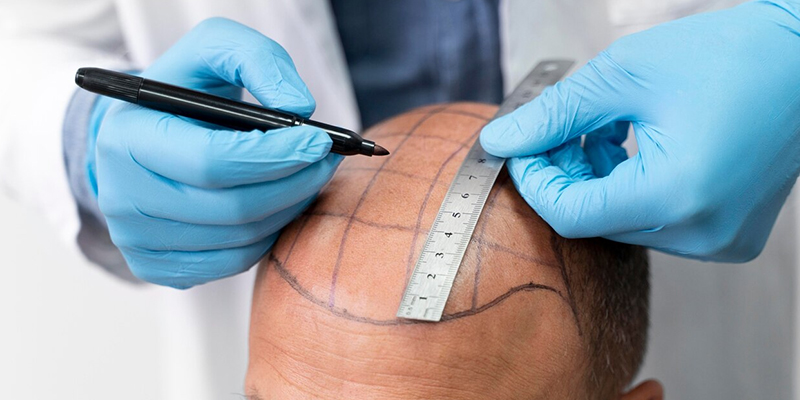Yes, hair transplant can indeed produce long-lasting results. The procedure involves transplanting hair follicles from a donor site to the balding or thinning areas of the scalp. Once these follicles are transplanted, they continue to grow hair in their new location, providing a permanent solution to hair loss. Nonetheless, a number of variables, such as the surgeon’s experience, the caliber of the donor hair, and the aftercare, can affect how long a hair transplant lasts. With proper care and maintenance, a hair transplant clinic can result in natural-looking hair growth that lasts a lifetime.
Factors Influencing the Long-Term Success of Hair Transplants
The longevity of hair transplant results hinges on various factors, each playing a pivotal role in ensuring lasting success.
Surgeon’s Expertise and Technique: A skilled surgeon employing advanced techniques such as Follicular Unit Extraction (FUE) or Direct Hair Implantation (DHI) can significantly impact the outcome. Precise harvesting and transplantation of donor follicles are critical for optimal results.
Quality of Donor Hair: The health and quality of the donor hair follicles are paramount. Healthy follicles are more likely to thrive in their new location, ensuring continued hair growth.
Transplant Density: The density at which hair is transplanted can affect the overall appearance and naturalness of the results. Higher densities often result in fuller-looking hair.
Post-Transplant Care: Proper care of the transplanted area is crucial for optimal results. This includes keeping the area clean, avoiding trauma or pressure, and following the surgeon’s instructions regarding medications and lifestyle changes.
Good Health and Lifestyle: The individual’s overall health and lifestyle can impact the success of the transplant. Factors such as diet, stress levels, and underlying health conditions can all affect the health of the hair follicles and the overall outcome.
Post Transplant Care Tips:
- Gentle Handling: Avoid touching or rubbing the transplanted area to prevent dislodging grafts.
- Medication Compliance: Take prescribed medications, including antibiotics and anti-inflammatories, as directed.
- Scalp Hygiene: Keep the scalp clean but avoid excessive washing or scrubbing.
- Avoid Sun Exposure: Protect the scalp from direct sun exposure, especially in the first few months post-transplant.
- Avoid Strenuous Activities: Refrain from activities that may strain the scalp or increase sweating.
- Regular Follow-ups: Attend scheduled follow-up appointments to monitor progress and address any concerns promptly.
- Healthy Diet: Maintain a balanced diet rich in nutrients to support hair growth and overall health.
- Stress Management: Minimize stress, as it can impact hair health and transplant success.
What to Expect After Transplant?
After a hair transplant surgery, it’s common to experience some initial shedding of the transplanted hair. This is a natural part of the process, and new hair growth typically begins within a few months. During the initial phase, you may notice some swelling and redness in the transplanted area, which should gradually subside.
As the transplanted hair follicles begin to take root, you may also experience some itching or discomfort. This is normal and can be managed with proper care and medication as advised by your doctor. It’s important to follow post-transplant care instructions carefully to ensure the best possible results.
Over time, the transplanted hair will continue to grow and blend in with your existing hair, providing a natural-looking result. While individual results may vary, many people find that a hair transplant can produce long-lasting and satisfying results.
Conclusion:
In conclusion, a hair transplant surgery can indeed produce long-lasting results for those seeking to restore their hairline and confidence. By understanding the factors that influence the lasting impact of the procedure, following post-transplant care tips diligently, and knowing what to expect after the transplant, individuals can achieve successful outcomes.
While some initial shedding and discomfort are normal, these are temporary and should not deter individuals from pursuing a hair transplant. With patience and proper care, the transplanted hair follicles will take root and grow, blending seamlessly with existing hair.
It’s important to consult with a qualified professional to discuss individual needs and expectations. By taking these steps and maintaining realistic expectations, many people find that a hair transplant can provide a permanent solution to hair loss, enhancing their appearance and quality of life for years to come.

